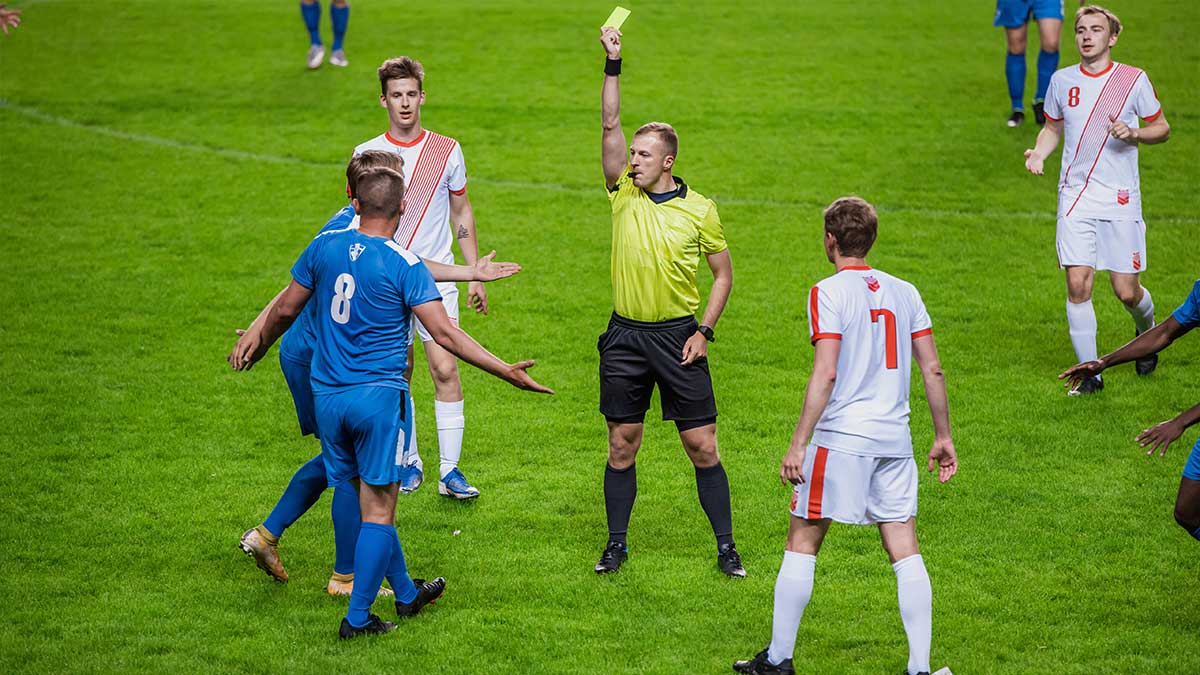In the ever-evolving realm of football, the grand entrance of Video Assistant Referee (VAR) technology promised to be a game-changer, vowing to eliminate the contentious and subjective calls that have been intrinsic to the sport. The aim was straightforward: to deliver an impartial and indisputable resolution to every questionable decision. Yet, as the chapters of football history unfold, the reality reveals itself as a tale intricately woven with nuance and complexity. While VAR may have rectified some missteps, it has also ushered in a new puzzle—the persistence of subjectivity, igniting ongoing debates.
A Revolution in Full Swing
The advent of VAR was hailed as a revolutionary force in football officiating. The era of goal-line disputes and hairline offside calls that pushed the limits of the human eye seemed to be over. With multiple camera angles, high-definition replays, and an off-site VAR team, the system appeared to be the ultimate remedy. It aimed to erase the referee’s doubts and furnish an unequivocal response within mere seconds.
Limitations in the Code of Technology
Despite VAR unquestionably enhancing decision accuracy, it hasn’t entirely banished subjectivity from the game. The technology, for all its sophistication, remains intertwined with human interpretation. The phrase “clear and obvious error” became the lynchpin of VAR, yet what constitutes clarity and obviousness remains a realm of interpretation.
The Offside Conundrum
One realm where subjectivity looms large is the offside rule. Offside decisions, elusive in real-time with the naked eye, were anticipated to find clarity through VAR. However, this hope has given rise to new controversies. Lines are drawn, dotted lines grace our screens, yet even with technology, the offside call is not always unequivocal.
The calibration of when the ball leaves the passer’s foot can be a matter of milliseconds. In close decisions, these milliseconds make the difference, sparking debates about whether a player’s toenail was offside. While the technology has brought an unprecedented level of precision, it has simultaneously transformed offside calls into matters of millimeters and angles, where the human eye’s interpretation of when the ball was played becomes pivotal.
Handball: An Art of Subjectivity
Another battleground of subjectivity is handball. Despite the laws of the game attempting to delineate what constitutes a handball, judgments persist. The arm’s position, the distance between players, and the ball’s speed all contribute to the decision. While VAR provides multiple angles and slow-motion replays, it doesn’t always yield the definitive answer promised.
Navigating the Gray Area of Foul Play
Foul play constitutes another domain where VAR falls short of purging subjectivity. What one referee views as a card-worthy foul may be seen as a fair challenge by another. Even with VAR, room for interpretation exists, sparking fervent debates among fans, players, and pundits.
The Emotional Rollercoaster
VAR hasn’t just altered the dynamics on the field but has also reshaped the viewing experience. The thrill of scoring a goal is now accompanied by the apprehension of a potential VAR review. The anguish of a referee awarding a penalty is matched by the agony of awaiting VAR’s verdict. The emotional upheaval accompanying VAR decisions is a new reality for football aficionados.
The Quest for Equilibrium
In its pursuit of flawlessness, VAR was introduced to obliterate errors, yet it has birthed fresh controversies. Subjectivity in decisions persists, fueling debates born out of varying interpretations of the technology’s output.
The challenge appears to be striking a balance between VAR’s benefits and the imperative of human judgment. Technology can assist, but it cannot entirely supplant the human element in football. The ongoing discourse on VAR and subjectivity underscores the need to embrace progress while upholding the essence of the game, including its capacity for controversy, passion, and debate. Football, like life, doesn’t always adhere to the principles of clarity and obviousness.








